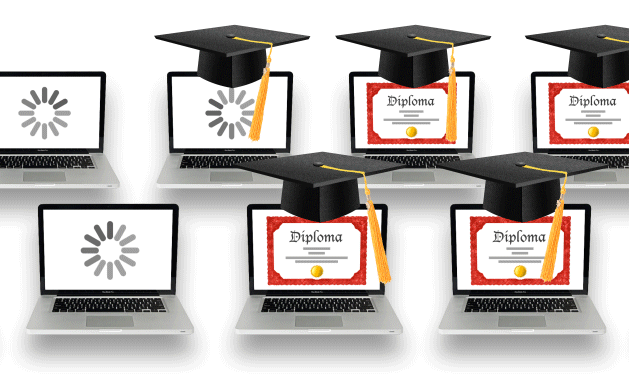Very quickly, coronavirus (COVID-19) has changed how education is taught around the world. The progressions give us a look at how teaching could improve – and the more disastrous – in the long haul.

With the coronavirus spreading quickly across Asia, Europe, the Middle East, and the US, nations have taken quick and definitive actions to relieve the advancement of an out and out pandemic. In the previous two weeks, there have been various declarations suspending participation at schools, colleges and Universities. As of March 13, the OECD assessed that more than 421 million children are influenced because of these closures reported or executed in 39 nations. Furthermore, another 22 nations have declared halfway “limited” closures.
These hazard control choices have driven a great many students into transitory ‘self-teaching’ circumstances, particularly in probably the most vigorously affected nations, similar to China, South Korea, Italy, and Iran. These progressions have surely caused a level of un-comfort, however they have likewise provoked new instances of instructive development. In spite of the fact that it is too soon to judge how responses to COVID-19 will influence teaching frameworks around the globe, there are signs proposing that it could lastingly affect the direction of learning advancement and digitization. Underneath, we follow three patterns that could indicate future changes:
Education – nudged and pushed to change – could prompt amazing developments
The moderate pace of progress in academic institutions all around is appalling, with hundreds of years old, lecture based ways to deal with education, settled in institutional inclinations, and old fashioned study halls. Be that as it may, COVID-19 has become an impetus for academic institutions worldwide to scan for inventive arrangements in a moderately brief timeframe.

The coronavirus pandemic has changed how millions around the world are taught.
To help moderate the infection’s spread, education in Hong Kong began to learning from home, in February, by means of intuitive applications. In China, 120 million Chinese gain access to learning material through live transmissions.
Other more straightforward – yet no less imaginative – arrangements were executed around the world. In one Nigerian school, standard offbeat web based learning devices, (for example, perusing material through Google Study hall), were expanded with synchronous eye-to-eye video guidance, to assist instructions with academic institution closures.
Additionally, students at one school in Lebanon started utilizing web based learning, in any event, for subjects, for example, physical education. Students shot and sent over their own recordings of athletic preparing and sports to their educators as “schoolwork,” pushing students to learn new computerised aptitudes. One student’s parent commented, “while the games practice took a couple of moments, my child went through three hours shooting, altering and sending the video in the correct configuration to his educator.”
With 5G innovation getting increasingly predominant in nations, for example, China, US and Japan, we will see students and solution providers genuinely grasping the ‘adapting anyplace, whenever’ idea of advanced education in a scope of configurations. Customary in-person classroom learning will be supplemented with new taking in modalities – from live communicates to ‘educational influencers’ to augmented reality encounters. Learning could turn into a propensity that is coordinated into day-by-day schedules – a genuine way of life.
Public-private educational partnerships could develop significantly
In only the previous weeks, we have seen learning consortiums and alliances coming to fruition, with different partners – including governments, distributers, training experts, innovation suppliers, and telecom network operators – meeting up to use computerised stages as a transitory answer for the emergency. In rising nations where training has dominatingly been given by the government, this could turn into a predominant and significant pattern to future education.
New answers for training could bring genuinely necessary advancement
In China, the Education Ministry has collected a gathering of differing constituents to build up another cloud-based, web based learning and broadcasting stage just as to overhaul a suite of educational framework, driven by the education Ministry and Ministry of Industry and Information Technology.

Essentially, the Hong Kong-based readtogether.hk forum is a consortium of more than 60 educational associations, distributers, media, and media outlet experts, giving in excess of 900 educational resources, including recordings, book parts, evaluation devices, and advising services for free. The consortium will likely keep utilising and keeping up the platform much after COVID-19 has been contained.
Through models like these, it is apparent that educational development is getting consideration past the ordinary government-subsidised or non-benefit upheld social venture. In the previous decade, we have just observed far more noteworthy premium, and venture, originating from the private sector in education arrangements and advancement. From Microsoft and Google in the U.S. to Samsung in Korea to Tencent, Ping An, and Alibaba in China, enterprises are arousing to the key basic of an educated masses. While most activities to date have been restricted in scope, and generally separated, the pandemic could prepare for a lot bigger scope, cross-industry alliances to be conformed to a typical educational objective.
The computerised separation could enlarge
Most schools in influenced territories are discovering stop-hole answers for keep educating, yet the nature of learning is vigorously subject to the level and nature of computerised access. All things considered, just around 60% of the globe’s populace is on the web. While virtual classes on close to home tablets might be the standard in Hong Kong, for instance, numerous students in less created economies depend on exercises and assignments sent by means of WhatsApp or email.

Given the advanced partition, new moves in teaching approaches could augment correspondence holes.
Besides, the less wealthy and carefully keen individual families are, the further their students are abandoned. At the point when classes progress on the web, these children miss out as a result of the expense of computerised gadgets and information plans.
Except if get to costs diminishing and nature of access increment in all nations, the hole in instruction quality, and in this manner financial uniformity will be additionally exacerbated. The computerised partition could turn out to be increasingly outrageous if educational access is directed by access to the most recent innovations.
The quick spread of COVID-19 has shown the significance of building strength to confront different dangers, from pandemic ailment to fanatic viciousness to atmosphere frailty, and even, indeed, fast innovative change. The pandemic is additionally a chance to help ourselves to remember the abilities students need right now, for example, informed decision making, innovative critical thinking, and maybe most importantly, flexibility. To guarantee those aptitudes stay a need for all students, versatility must be incorporated with our educational frameworks too.

Afsheen Gohar believes in the power of clear, straightforward writing. Her blog posts tackle everyday topics with relatable insights and easy-to-follow advice. With a conversational style, she makes complex subjects feel understandable. She’s dedicated to sharing knowledge and empowering readers to take action. Find her latest posts on trending in social.










